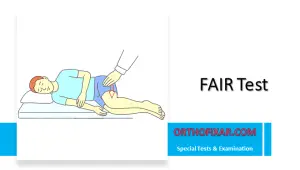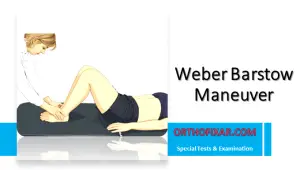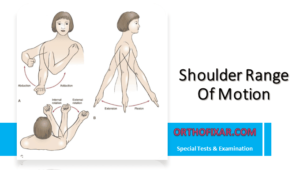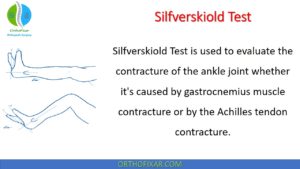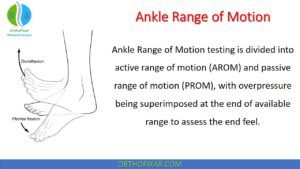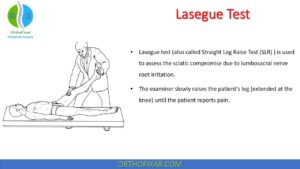5 Ways to Improve Orthopedic Surgery Recovery
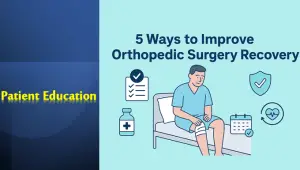
Orthopedic surgery recovery is usually thought of as ‘just waiting for the bones or joints to heal’. And that’s true, but it’s very generalized; there’s so much more to it.
Post-surgery recovery is: medication and wound cleaning/drying, controlling pain and swelling (all that while ensuring there’s no infection), rehab, nutrition, watching for any complications, and forcing activity. Each one of the steps requires extensive skill and knowledge from the staff to ensure the whole process goes smoothly, plus if there are any issues, they need to be handled swiftly and correctly.
That’s why it’s extremely important that the hospital you stay in is of superb quality and that its medical teams are doing everything in their power to protect its patients by having preventive measures designed to prevent complications/mistakes.
You need to know what to expect to be able to make every step necessary with proper protocols.
Below are five hospital safety checks that shouldn’t be excluded after having orthopedic procedures.
Verification of Surgical and Post-Operative Monitoring
Checking the verification of the surgical site is a basic yet critical step.
Hospitals usually do it using a protocol known as the ‘time-out’ method (done before/after surgery). The staff’s job is to confirm the procedure details. After surgery, their job is to examine the incision site regularly, because it enables early spotting of any improper wound closure, which can be mended straight away, and it enables staff to detect swelling/infection signs.
When complications are noticed in time, they’re most treatable.
Every patient should know that surgical verification is not done after surgery. It continues throughout the recovery process.
Pain and Mobility Assessments
There is no recovery without pain, but pain levels and the ability to move after having orthopedic surgery are something that needs to be assessed every day of recovery. Too much pain can be a red flag. On the other hand, too little movement can be an indicator of complications like stiffness or some serious complications like, for example, deep vein thrombosis (DVT).
There are many tests doctors use in order to track joint function. If necessary, they order imaging studies to see how the progress is going. These assessments are very important for medical teams, because they give them real-time feedback about recovery; in other words, is the recovery going well, or if there is a need for some adjustments.
Patients should always be informed about the results and if there is something that affects their rehabilitation plan.
Infection Prevention Protocols
Ensuring everything’s done to minimize the risks of infections is one of the priorities for medical staff.
Here are some of the common infection prevention measures you can expect after surgery:
| Prevention Step | Why It Matters |
| Hand hygiene compliance | Reduces the risk of bacteria transfer to wounds |
| Antibiotic prophylaxis | Prevents surgical site infections in the early stages |
| Regular wound checks | Identifies swelling, redness, or unusual drainage |
| Clean bandage changes | Keeps the incision protected from external exposure |
If any patient notices lapses in these steps, they should speak up and ask questions. Infection is one of the most preventable complications, but it can also happen commonly if protocols aren’t followed.
Patient Rights and Boundary Protection
The purpose of safety checks isn’t only to determine that everything is right physically.
If you’re staying in a hospital, you should expect staff to respect your privacy, dignity, and personal boundaries.
There are plenty of documented cases where the hospital doesn’t live up to those standards. If you (or someone you know) falls victim to any misconduct and/or abuse, it’s important to hold the institution accountable. This way, they’ll be forced to improve upon themselves, which helps all future patients receive better care.
But also, the person who suffered this misconduct/abuse can also get some justice in the form of compensation. That’s why it’s very important to consult a lawyer as soon as possible, and they’ll guide you through the steps you need to take. If the abuse is of a sexual nature (again, plenty of documented cases), a hospital sexual abuse lawyer will be best-equipped to handle such a case.
Patients should feel safe not only in the matter of medical protocols, but also in every other way.
Discharge Planning and Follow-Up
Hospital experience is not safe only while you are staying there. It should be continued after you leave the building.
If the medical staff provides you with a proper discharge plan, you will know how to care for the surgical site when you get home and what warning signs to pay attention to. Also, you should know when to return for a check-up.
Follow-ups are in the form of physical examinations where doctors/nurses evaluate joint strength, balance, and the whole healing process. This is just an ‘extra’ check that puts some ease on the mind and provides reassurance before you’re discharged.
Conclusion
A skilled orthopedic surgeon isn’t a guarantee for a good Orthopedic Surgery Recovery.
That’s because the recovery process starts only after the surgeon’s job is done. It’s the hospital staff and their safety practices (e.g., safety practices, communication, respect for patients’ rights) that pave a great path for you to be at 100% again.
And how and how often they check up on you is only good practice to make your recovery better.
- Lifetime product updates
- Install on one device
- Lifetime product support
App Features:
- Lifetime product updates
- Install on one device
- Lifetime product support
App Features:
- Lifetime product updates
- Install on one device
- Lifetime product support
App Features:
- Lifetime product updates
- Install on one device
- Lifetime product support


